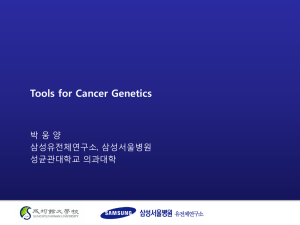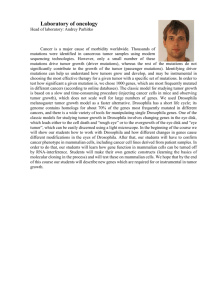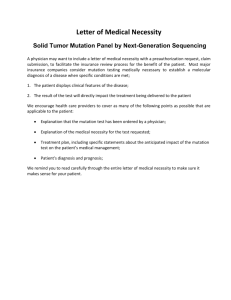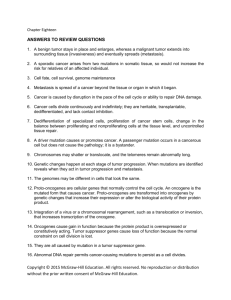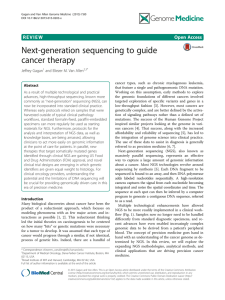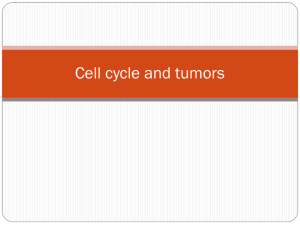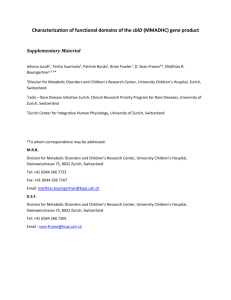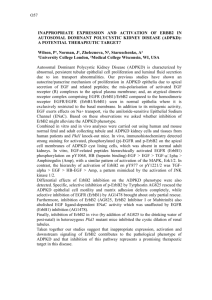Supplemental Methods - Next Generation Sequencing
advertisement
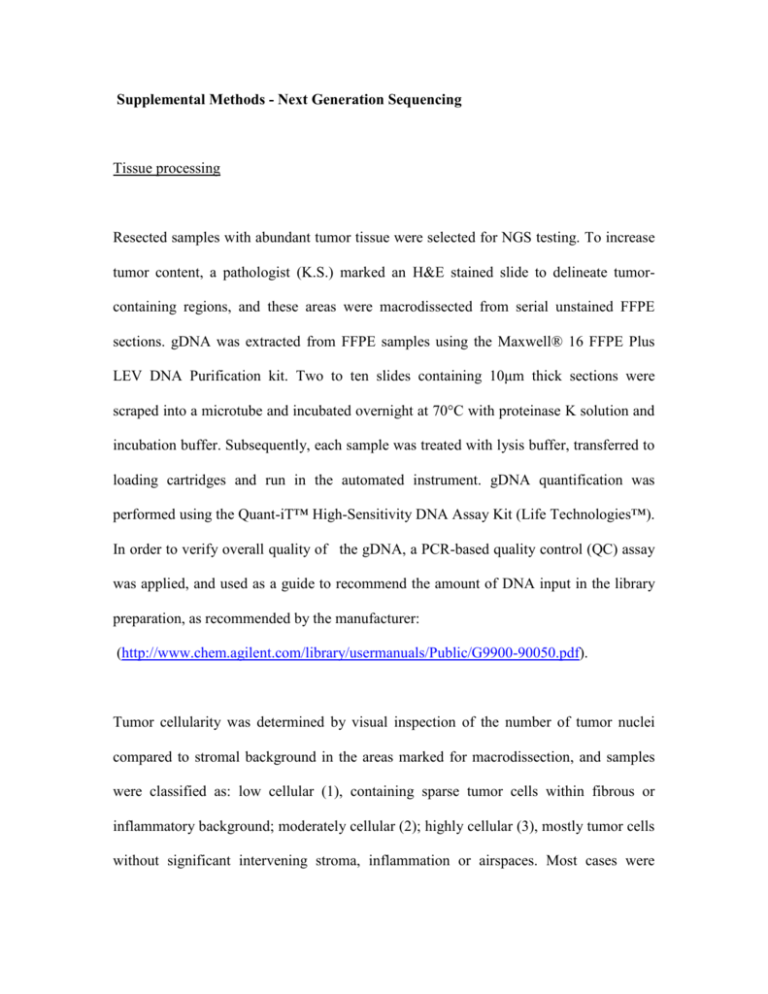
Supplemental Methods - Next Generation Sequencing Tissue processing Resected samples with abundant tumor tissue were selected for NGS testing. To increase tumor content, a pathologist (K.S.) marked an H&E stained slide to delineate tumorcontaining regions, and these areas were macrodissected from serial unstained FFPE sections. gDNA was extracted from FFPE samples using the Maxwell® 16 FFPE Plus LEV DNA Purification kit. Two to ten slides containing 10μm thick sections were scraped into a microtube and incubated overnight at 70°C with proteinase K solution and incubation buffer. Subsequently, each sample was treated with lysis buffer, transferred to loading cartridges and run in the automated instrument. gDNA quantification was performed using the Quant-iT™ High-Sensitivity DNA Assay Kit (Life Technologies™). In order to verify overall quality of the gDNA, a PCR-based quality control (QC) assay was applied, and used as a guide to recommend the amount of DNA input in the library preparation, as recommended by the manufacturer: (http://www.chem.agilent.com/library/usermanuals/Public/G9900-90050.pdf). Tumor cellularity was determined by visual inspection of the number of tumor nuclei compared to stromal background in the areas marked for macrodissection, and samples were classified as: low cellular (1), containing sparse tumor cells within fibrous or inflammatory background; moderately cellular (2); highly cellular (3), mostly tumor cells without significant intervening stroma, inflammation or airspaces. Most cases were estimated as either highly or moderately cellular (87%). Representative images are presented in Supplemental Figure 3, and sample classification in Supplemental Table 9. Data processing Sequencing reads were aligned to the human genome (hg19 assembly) using SureCall (Agilent Technologies), and variant calling was processed on the Unified Genotyper Genome Analysis Tool Kit (GATK). Annotation of the variants was carried out on GenomOncology’s GenomAnalytics platform (GenomOncology, Cleveland, OH). To enable a combined analysis with SNaPshot, NGS results were filtered to exclusively include the same base substitutions covered by that panel, summarized in Supplemental Table 1, in addition to EGFR exon 19 deletion, EGFR exon 20 insertion, and HER2 exon 20 insertions. Validation process In order to validate the sequencing panel and analysis, we sequenced 3 NSCLC cell lines (A549, HCC827, and H4006) and 12 clinical formalin-fixed paraffin-embedded samples with known mutation status for EGFR and KRAS, as previously assessed in a Clinical Laboratory Improvement Amendments (CLIA)-certified laboratory. Our platform proved highly sensitive, successfully identifying 100% of the known mutations in these cases (Supplemental Table 10). Moreover, there were no false positives among samples wild type for EGFR and KRAS. Instead, we detected at least one plausible driver alteration in an EGFR/KRAS wild type sample. This tumor harbored an exon 20 G776V point mutation in ERBB2. The G776 position is a hotspot for mutations and insertions in ERBB2, which have been associated with higher sensitivity to trastuzumab.1,2 Sequencing performance Sequencing performance was assessed by measuring the number of reads, mapped reads, and target base coverage. The mean number of reads and mapped reads were 5.2 millions (range 1.8-7.7) and 5.1 millions (range 1.6-7.6), respectively. The average alignment rate was 0.98 (standard deviation, std dev 0.015). The mean actual target coverage was 904X (range 270-1373). The average percentages of target reads covered at least 2-fold (2X) and 20-fold (20X) were 98.5% (std dev 0.01) and 94.3% (std dev 0.03), respectively. Tumor cellularity was not associated with number of mutations per sample (p=0.503) after excluding known germline variants, suggesting that high sequencing depth was enough to counter low cellularity. The frequency of driver mutations after excluding low cellular samples is 26.7% (23 cases out of 86 tested), therefore not distinct from the 24% reported in the total cohort. Data on sequencing metrics are summarized in Supplemental Tables 11 and 12. References 1. Shigematsu H, Takahashi T, Nomura M, et al: Somatic mutations of the HER2 kinase domain in lung adenocarcinomas. Cancer Res 65:1642-6, 2005 2. Arcila ME, Chaft JE, Nafa K, et al: Prevalence, clinicopathologic associations, and molecular spectrum of ERBB2 (HER2) tyrosine kinase mutations in lung adenocarcinomas. Clin Cancer Res 18:4910-8, 2012
